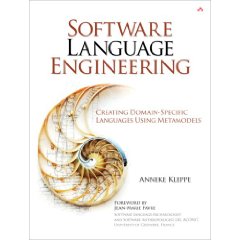Computer Networks - Andrew.S.Tannenbaum
The purpose of this course is to introduce fundamental principles and concepts of computer networks. We will use a top-down approach to study the Internet Protocol stack. We will first study popular network applications such as Web, email, FTP, and P2P, then study communications services required to support these applications, and finally study how these communication services are implemented. Throughout this course, we will use the Internet's architecture and protocols to reinforce fundamental computer networking principles.
Textbook, References, and Reading List
The recommended textbook for this course is:A supplementary textbook (recommended, but not required) is:Click Below to Download the files :-
Outline (And PPT , PDF Notes)
- Introduction (2 weeks)Overview of the Internet, client/server paradigm, circuit switching, packet switching, physical media, queuing delay and packet loss, TCP/IP and OSI reference models, Internet Protocol Stack
Lecture Slides: Introduction (PPT , PDF)
CAnet4 map
Readings: Chapter 1 (Kurose and Ross); Sections 1.1 - 1.9, 2.2 (Tanenbaum) - Network Layer Addressing (1 week)NIC addressing, IP addressing, IPv4, IPv6, ICMP
Lecture Slides: Network Layer Addressing (PPT, PDF), Link Layer Addressing (PPT, PDF)
Readings: Section 4.4, 5.4 (Kurose and Ross); Section 5.6 (Tanenbaum) - Application Layer (1.5 weeks)Service requirements, WWW, HTTP, Electronic Mail, Domain Name System, Socket programming
Lecture Slides: HTTP and WWW (PPT , PDF), FTP, SMTP (PPT, PDF), DNS (PPT, PDF)
Readings: Chapter 2 (Kurose and Ross); Sections 7.1 - 7.3 (Tanenbaum) - Transport Layer (2 weeks)Service models, Multiplexing/Demultiplexing, Connection-less transport (UDP), Principles of reliable data transfer, Connection-oriented transport (TCP), TCP congestion control, TCP Variants
Lecture Slides: Introduction/UDP (PPT, PDF), Checksum IP/UDP (PPT, PDF), Reliable Data Transfer (PPT, PDF), Transmission Control Protocol (PPT,PDF)
Readings: Chapter 3 (Kurose and Ross); Chapter 6 (Tanenbaum) - Network Layer Routing (1.5 weeks)Routing and forwarding, Routing algorithms, Routing in the Internet, Multicast
Lecture Slides: Forwarding (PPT, PDF), Routing (PPT, PDF)
Readings: Chapter 4 (Kurose and Ross); Chapter 5 (Tanenbaum) - Link Layer and Local Area Networks (1.5 weeks)Link layer services, Error detection and correction, Multiple Access Protocols, Link layer addressing, Ethernet, Hubs and switches, Point-to-Point Protocol
Lecture Slides: (PPT, PDF)
Readings: Chapter 5 (Kurose and Ross); Sections 3.1, 4.1 - 4.3 (Tanenbaum) - Wireless and Mobile Networks (1.5 weeks)Wireless links and network characteristics, Wi-Fi: IEEE 802.11 Wireless LANs, Cellular Internet Access, Mobility management and Mobile IP
Lecture Slides: (PPT, PDF)
Readings: Chapter 6 (Kurose and Ross); Sections 4.4 - 4.5 (Tanenbaum) - Multimedia Networking (1 week)Networked multimedia applications, best-effort service and multimedia delivery requirements, Multimedia protocols (RTSP, RTP, RTCP, SIP), Content Distribution Networks
Lecture Slides: (PPT, PDF)
Readings: Sections 7.1 - 7.5 (Kurose and Ross); Section 7.4 (Tanenbaum) - Security (1 week)Principles of cryptography, symmetric key algorithms, public key algorithms
Readings: Sections 8.1 - 8.5 (Kurose and Ross); Sections 8.1 - 8.3 (Tanenbaum)






